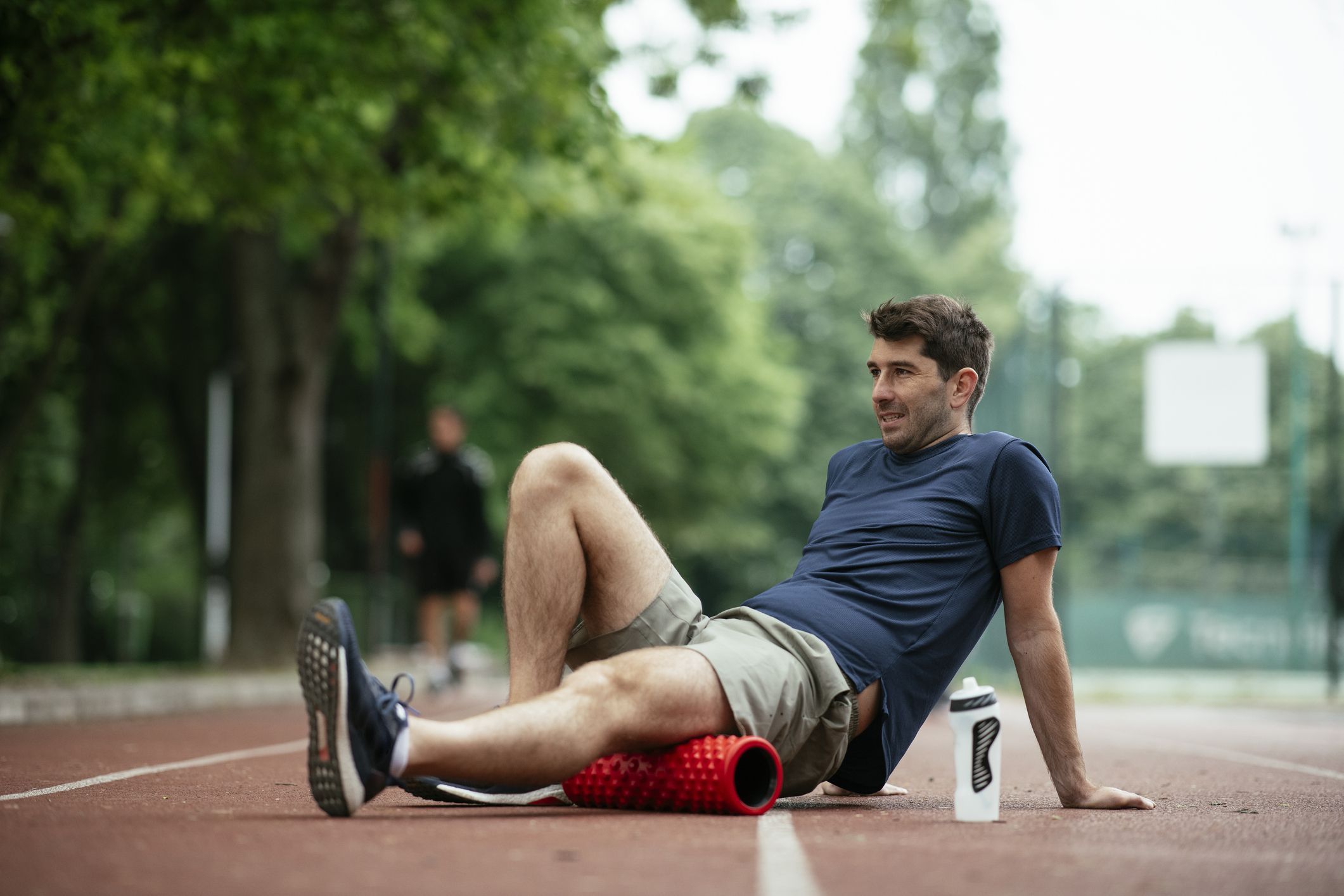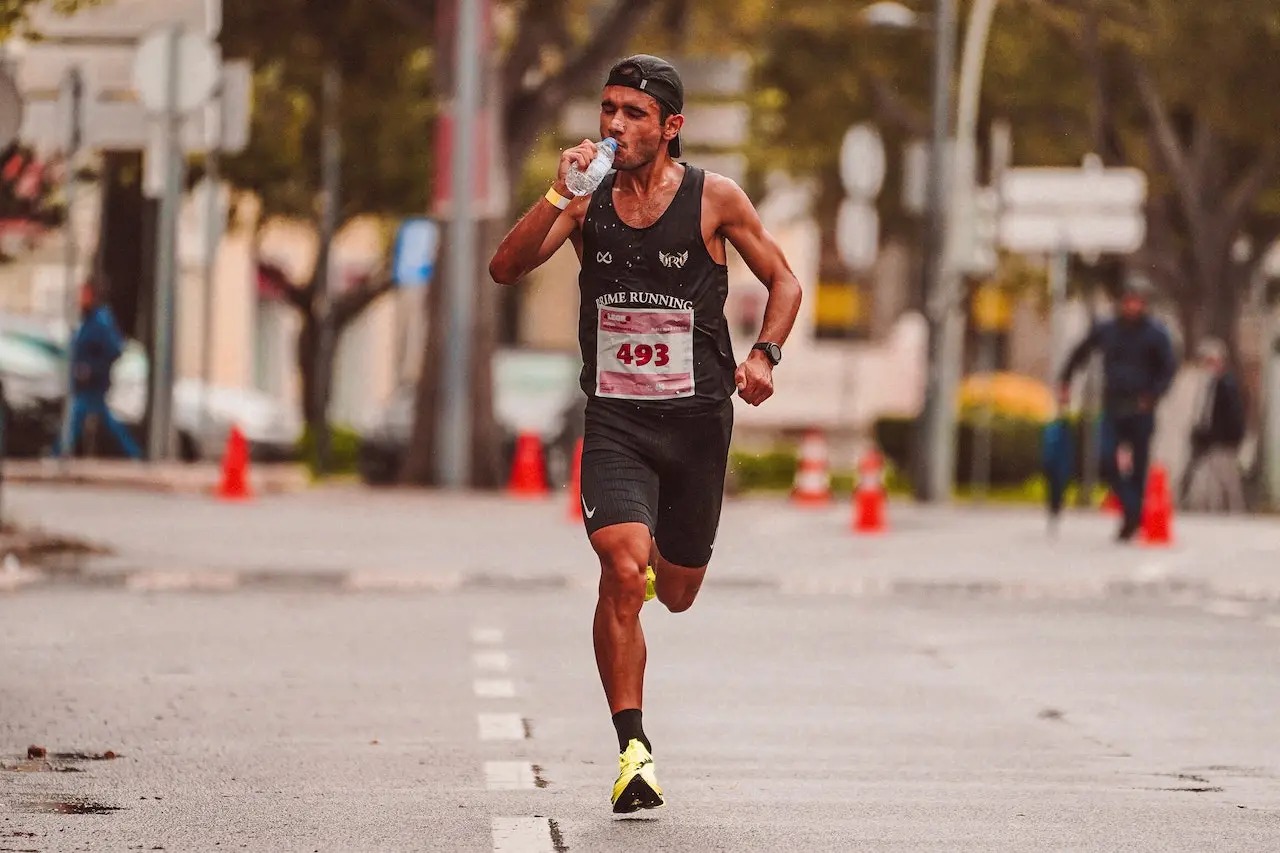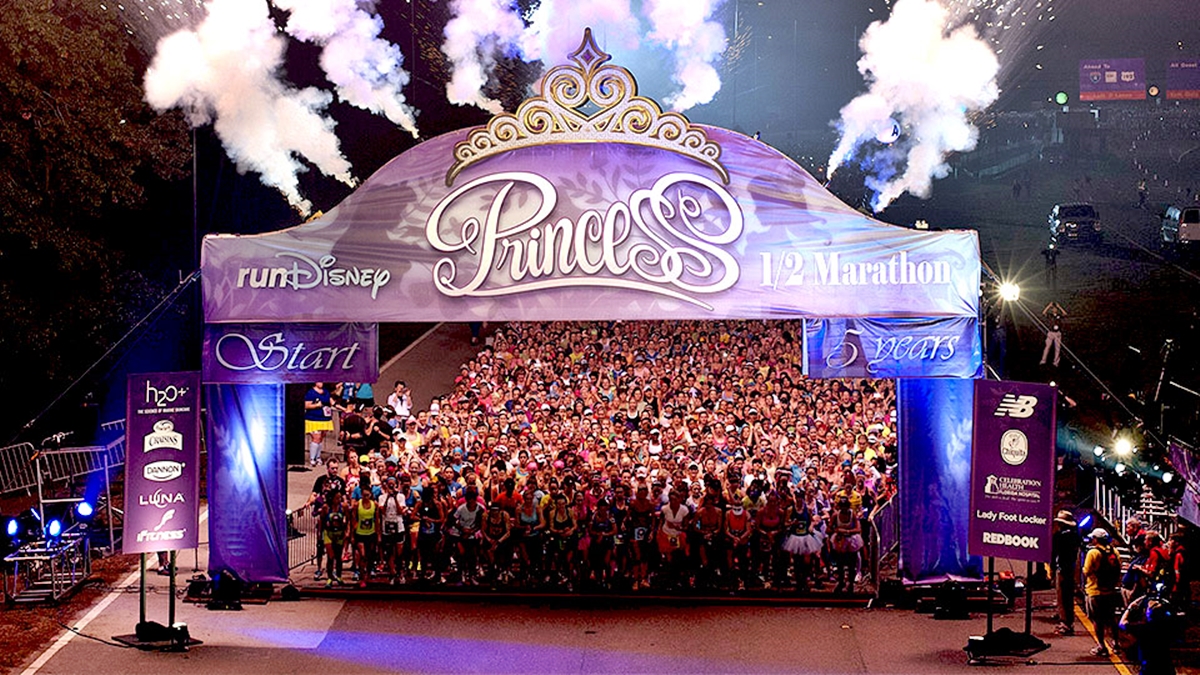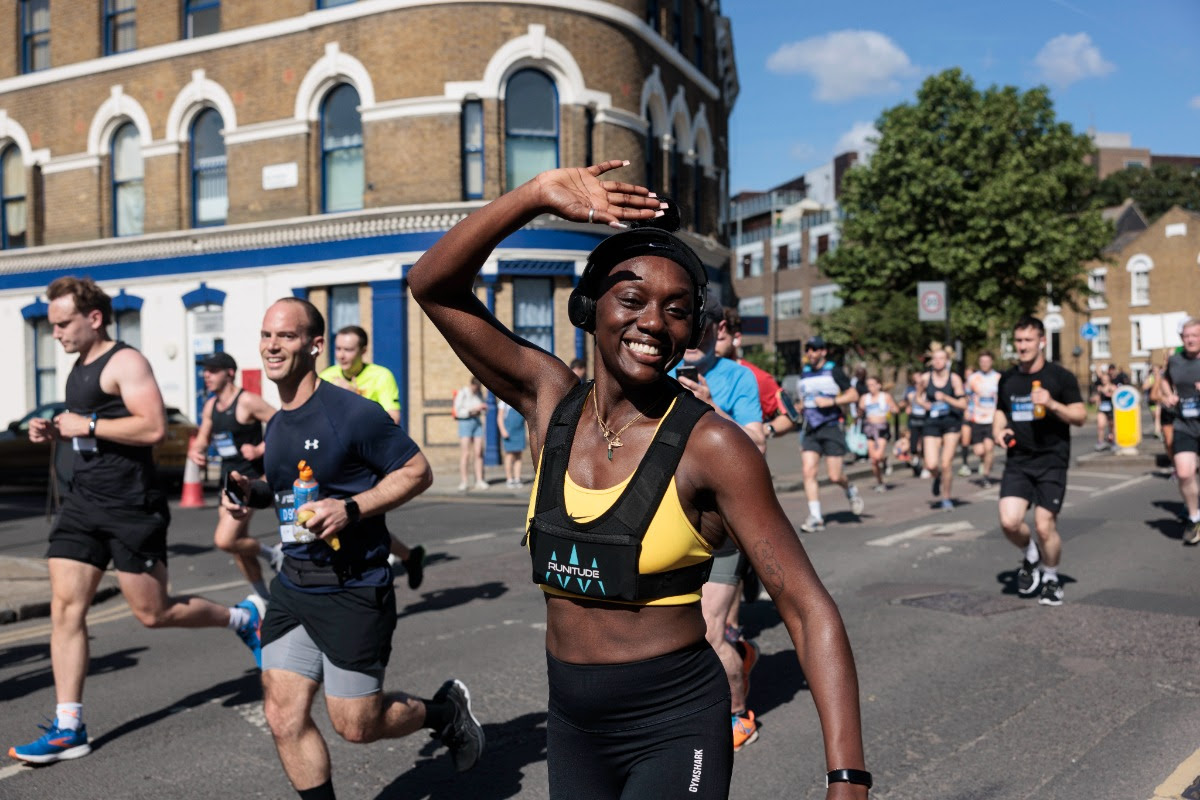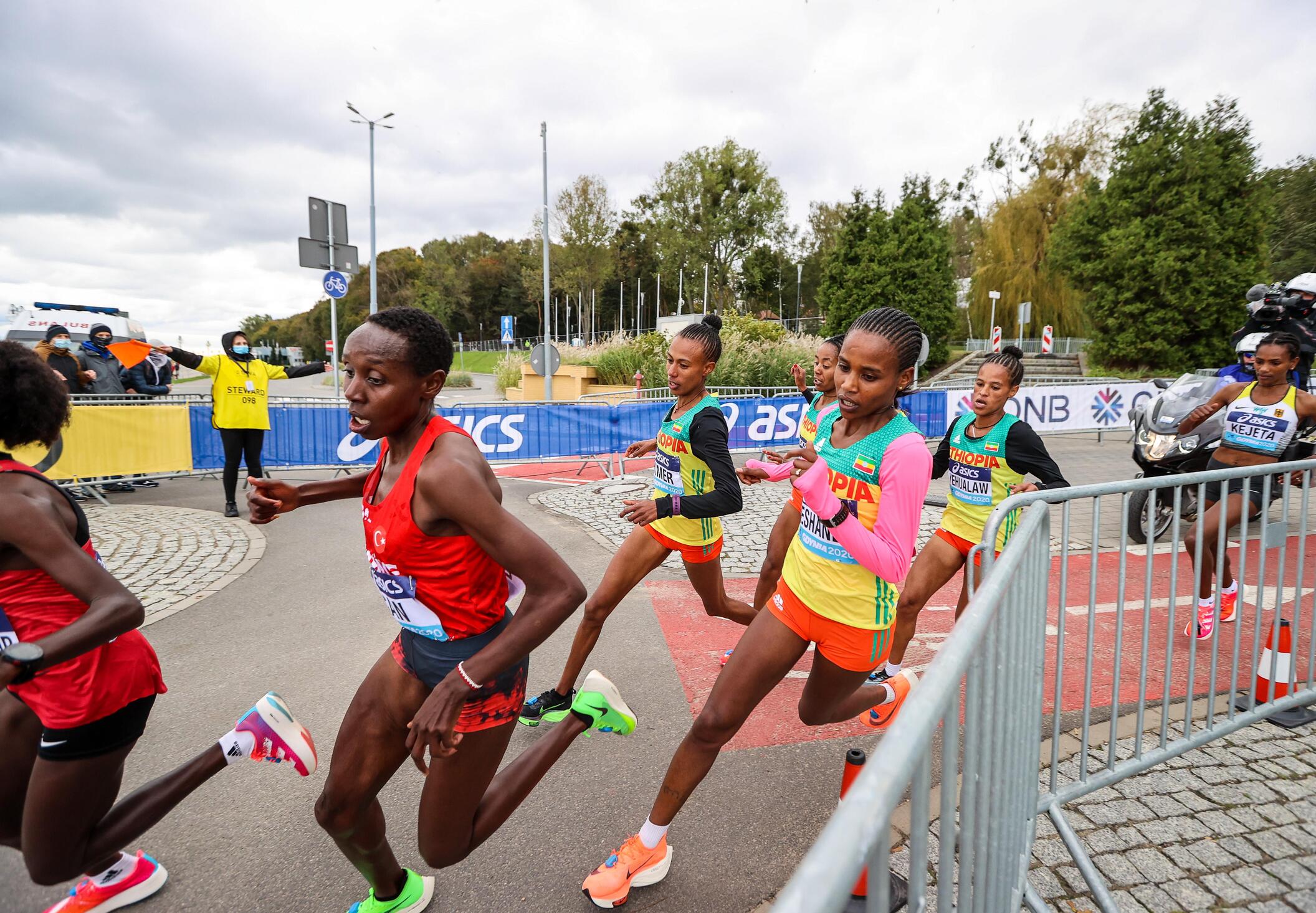

Featured
How Long Is A Half Marathon
Modified: January 1, 2024
Discover the optimal distance for a half marathon and learn how long it typically takes to complete. Explore expert tips and training advice in this featured article.
Introduction
Welcome to the world of half marathons! Whether you’re a seasoned runner or new to the running game, the half marathon is a popular distance that challenges both your physical endurance and mental resilience. With a distance of 13.1 miles (or 21.1 kilometers), the half marathon strikes a balance between the shorter 10K races and the longer, more grueling full marathons.
The half marathon has gained tremendous popularity over the years, attracting a diverse group of participants, from elite athletes to casual runners looking for a new challenge. It’s a test of stamina, determination, and willpower, pushing runners to their limits and rewarding them with an incredible sense of accomplishment upon crossing the finish line.
In this article, we’ll explore everything there is to know about half marathons. We’ll delve into the history of the distance, provide training tips, discuss common mistakes to avoid, and offer valuable insights for race day preparation and recovery. By the end of this guide, you’ll have a comprehensive understanding of what it takes to conquer a half marathon and enjoy the journey along the way.
Whether you’re aiming for a personal best time or simply want to complete your first half marathon, this article will equip you with the knowledge and strategies to make the most of your training and race experience.
So, lace up your running shoes, and let’s dive into the world of half marathons!
What is a Half Marathon?
A half marathon is a long-distance running race with a distance of 13.1 miles or 21.1 kilometers. It is a popular distance for both recreational runners and more serious athletes. The half marathon sits in between the shorter 10K race and the full marathon in terms of distance, providing a challenging but manageable goal for many runners.
The half marathon is a unique test of physical endurance and mental strength. It requires a suitable amount of training and preparation to complete the race successfully. Whether you’re a beginner or an experienced runner, the half marathon offers a chance to push your limits and achieve personal goals.
Half marathons can take place on various terrains, including road races that wind through city streets, scenic routes through parks and nature trails, or even on challenging trails in mountainous areas. This diversity adds to the excitement and appeal of the distance, allowing runners to choose races that align with their preferences and goals.
One of the reasons why the half marathon distance has become so popular is its accessibility. Unlike a full marathon, which requires months of intensive training and a significant time commitment, training for a half marathon can be more manageable for individuals with busy schedules or those new to long-distance running.
Participating in a half marathon not only provides a physical challenge but also offers a sense of accomplishment and fulfillment. Crossing the finish line after hours of hard work and dedication brings a rush of endorphins and a feeling of pride that lingers long after the race day.
Whether you’re driven by competition and aiming for a personal best time, or simply aiming to complete your first half marathon, the sense of achievement and personal growth that comes with crossing that finish line is truly remarkable.
Now that you have a better understanding of what a half marathon entails, it’s time to explore the rich history behind this iconic distance. Join us in the next section as we dive into the origins and evolution of the half marathon.
The History of the Half Marathon
The origins of the half marathon can be traced back to the early 20th century. While full marathons have a long and storied history dating back to ancient Greece, the half marathon distance only gained recognition in the running community much later.
The half marathon emerged as a distinct race distance in the mid-20th century, but its exact origins are somewhat debated. Some believe that the first organized half marathon took place in England in the late 1960s, while others point to a race in New York City in 1959 as the inaugural event.
Regardless of its precise beginnings, the half marathon rapidly gained popularity around the world. In the 1970s, notable long-distance running events like the New York City Half Marathon and the San Diego Half Marathon showcased the growing interest in the distance.
The International Association of Athletics Federations (IAAF), the governing body for track and field competitions, officially recognized the half marathon as a race distance in 1992. This recognition solidified the half marathon’s place in the running world and paved the way for its inclusion in major athletic events and championships.
Over the years, the half marathon has become a staple in the running community, attracting thousands of participants and spectators. It combines the challenge of endurance and speed, offering a unique and exhilarating experience for both professional athletes and amateur runners alike.
Today, half marathons are organized all over the globe, with major events drawing participants from all walks of life. Popular races such as the Great North Run in the United Kingdom, the Rock ‘n’ Roll Marathon Series around the United States, and the Paris Half Marathon in France continue to captivate runners with their scenic routes and vibrant atmospheres.
The half marathon has also gained recognition within the world of elite running, with many professional athletes tackling the distance in prestigious races and championships. Half marathon world records have been set and broken, pushing the limits of human performance and inspiring runners of all levels.
As the popularity of the half marathon continues to soar, new innovations and developments are being introduced to further enhance the experience. From high-tech running gear and training techniques to virtual races and online communities, the half marathon world is constantly evolving.
The rich history and enduring appeal of the half marathon make it a captivating distance for runners worldwide. Whether you’re an avid runner seeking a personal challenge or a casual participant looking to join a community of like-minded individuals, the half marathon offers an opportunity to embrace the sport and achieve remarkable feats.
Now that we’ve explored the history of the half marathon, let’s dive into the essential aspects of training for this demanding distance. Join us in the next section as we discuss tips and strategies for preparing yourself physically and mentally for a successful half marathon.
Training for a Half Marathon
Preparing for a half marathon requires a structured training plan that gradually builds your endurance, speed, and overall fitness. Whether you’re new to running or have some experience under your belt, a well-rounded training regimen is crucial to ensure you complete the race successfully and minimize the risk of injuries. Here are some essential tips to help you train for a half marathon:
- Set a Realistic Goal: Determine your target finish time or simply aim to complete the race. Having a specific goal in mind will guide your training progress and keep you motivated throughout the process.
- Build a Training Schedule: Create a training plan that suits your fitness level and schedule. Gradually increase your weekly mileage and incorporate rest days to allow your body to recover.
- Incorporate Mix of Runs: Include different types of runs in your training routine, such as long runs, tempo runs, and speed workouts. These variations will help improve your endurance, speed, and overall performance.
- Include Cross-Training: Supplement your running with cross-training activities like cycling, swimming, or strength training. This will enhance your overall fitness, prevent muscle imbalances, and reduce the risk of overuse injuries.
- Listen to Your Body: Pay attention to any signs of injury or fatigue during your training. If you experience pain or discomfort, take appropriate rest and consult with a healthcare professional if necessary.
- Practice Fueling and Hydration: During your long runs and race-day simulations, experiment with different fueling strategies to find what works best for you. Stay hydrated throughout your training and on race day.
- Gradually Increase Mileage: Gradually increase your weekly mileage to build endurance. Avoid sudden jumps in mileage, as this can lead to overtraining or injuries.
- Rest and Recovery: Allow for rest days and incorporate active recovery activities like foam rolling and stretching. Adequate rest and recovery are essential for muscle repair and overall performance improvement.
- Join a Training Group or Find a Running Buddy: Training with others can provide motivation, accountability, and support. Consider joining a local running club or finding a running partner to make your training journey more enjoyable.
Remember, consistency is key in training for a half marathon. Stick to your training plan, listen to your body, and stay committed to the process. The journey to the finish line may have obstacles, but with the right mindset and preparation, you’ll be well on your way to conquering the half marathon distance.
Now that you’re equipped with the knowledge to train effectively, let’s move on to the next section, where we’ll discuss invaluable tips and strategies to maximize your performance on race day.
Tips for Running a Half Marathon
Running a half marathon can be a challenging yet rewarding experience. To help you make the most of your race day, here are some essential tips to keep in mind:
- Stick to Your Training Plan: Trust in your training and avoid the temptation to overdo it in the days leading up to the race. Stick to your tapering plan to ensure you’re well-rested and fully recovered on race day.
- Get Adequate Sleep: Prioritize getting enough sleep in the nights leading up to the race. Proper rest will help you feel refreshed, mentally focused, and physically ready to tackle the distance.
- Nutrition is Key: Pay attention to your pre-race nutrition. Fuel up with a balanced meal containing carbohydrates, protein, and healthy fats the night before the race. On race day, have a light, easily digestible meal a few hours before your start time.
- Hydration Matters: Stay hydrated leading up to the race and during the event. Drink fluids regularly and consider carrying a water bottle or utilizing aid stations along the course.
- Start Slow, Finish Strong: Pace yourself wisely at the beginning of the race. Overexerting yourself in the early stages can lead to fatigue later on. Find a comfortable rhythm and gradually increase your pace as you go.
- Use the Crowd’s Energy: Feed off the energy of the crowd and the fellow runners around you. Their cheers and camaraderie can provide a boost in motivation, especially during challenging moments in the race.
- Break the Distance into Smaller Goals: Mentally divide the race into manageable segments or landmarks. Focus on reaching the next mile marker, aid station, or a familiar point along the course. This approach can make the distance feel more achievable.
- Mind Over Matter: Prepare yourself mentally for the ups and downs of the race. Stay positive, use visualization techniques to imagine crossing the finish line, and draw motivation from the sense of accomplishment that awaits you.
- Manage Race Day Discomfort: Expect some discomfort during the race, whether it’s fatigue, muscle soreness, or blisters. Practice mental strategies to cope with these challenges, such as positive self-talk or focusing on your breathing.
- Enjoy the Experience: Remember to embrace the journey and enjoy the experience of running a half marathon. Smile, cheer for fellow runners, and savor the atmosphere and excitement surrounding the event. It’s a celebration of your hard work and determination.
By implementing these tips, you’ll be better prepared to tackle the half marathon distance and make the most of your race day experience. Remember, it’s not just about the finish line, but the personal growth and joy that come from the entire journey.
Now, let’s move on to our next section where we’ll discuss some common half marathon mistakes to avoid, ensuring a smoother and more successful race day.
Common Half Marathon Mistakes to Avoid
When training for and running a half marathon, it’s important to be aware of common mistakes that can hinder your performance or lead to unnecessary challenges. By recognizing and avoiding these errors, you can set yourself up for a smoother and more successful race day. Here are some common half marathon mistakes to avoid:
- Skipping Proper Warm-up: Neglecting a proper warm-up can increase the risk of injury. Spend a few minutes doing dynamic stretches and light jogging to prepare your muscles and joints for the effort ahead.
- Starting Too Fast: It can be tempting to get caught up in the excitement of the race and start at a faster pace than you can sustain. Be mindful of your target pace and start conservatively to avoid burning out too soon.
- Ignoring Hydration and Fueling: Failing to hydrate and fuel properly during a half marathon can lead to fatigue, cramping, and a decline in performance. Take advantage of aid stations, carry your own hydration, and practice your fueling strategy during training.
- Neglecting Mental Preparation: Running a half marathon requires mental resilience. Failing to prepare mentally can lead to negative thoughts, self-doubt, and a decrease in motivation. Practice mental strategies such as visualization and positive self-talk to stay focused and motivated throughout the race.
- Disregarding Recovery: Recovery is as important as training itself. Failing to prioritize recovery can increase the risk of injury and hinder performance. Incorporate rest days in your training plan, prioritize sleep, and take care of your body through proper nutrition and self-care.
- Wearing New or Unfamiliar Gear: Race day is not the time to try out new running shoes or gear. Wear clothing and shoes that you have trained in and are comfortable with to avoid discomfort, blisters, or other issues during the race.
- Not Familiarizing Yourself with the Course: Study the race course beforehand and familiarize yourself with any challenging sections or landmarks. Knowing what to expect will allow you to pace yourself better and mentally prepare for the ups and downs.
- Suboptimal Tapering: Improper tapering can leave you feeling sluggish or underprepared on race day. Follow a tapering plan that gradually reduces mileage and intensity to ensure you’re well-rested and peak at the right time for your race.
- Not Listening to Your Body: Pay attention to any warning signs or discomfort during training and on race day. Pushing through pain or ignoring injury signals can lead to long-term damage. If something feels off, take the necessary steps to address and resolve it.
Avoiding these common half marathon mistakes can greatly contribute to a more enjoyable and successful race day experience. By staying mindful, prepared, and in tune with your body, you’ll be able to overcome challenges and reach your goals with greater ease.
Now that we’ve covered common mistakes to avoid, let’s move on to the next section where we’ll discuss important aspects of preparing for race day.
Preparing for Race Day
The countdown to race day is an exciting time filled with anticipation and nerves. Proper preparation leading up to the event can make a significant difference in your performance and overall experience. Here are some key aspects to consider as you prepare for your half marathon race day:
- Create a Race Day Checklist: Make a list of all the essential items you’ll need on race day, such as your bib number, timing chip, comfortable race outfit, running shoes, hydration gear, snacks, and any necessary medication.
- Know the Race Logistics: Familiarize yourself with the race’s start time, location, parking options, and transportation details. Plan your arrival time accordingly to ensure a stress-free start to your race day.
- Visualize and Mentally Prep: Use visualization techniques to mentally rehearse the race, envisioning yourself crossing the finish line strong and accomplishing your goals. Visualizing a successful race helps build confidence and decreases anxiety.
- Check the Weather Forecast: Keep an eye on the weather leading up to race day. Plan your race outfit accordingly, considering the temperature, humidity, and any potential rainfall. Dress in layers to stay comfortable before the start and adjust as needed.
- Review the Course Elevation Profile: Take note of any significant uphill or downhill sections on the course. Adjust your pace strategy accordingly, conserving energy on inclines and capitalizing on downhills.
- Stick to Your Routine: In the days leading up to the race, maintain your regular sleep and eating schedule to maintain your energy levels and avoid digestive issues.
- Stay Hydrated: Start hydrating well in advance of the race to ensure you’re adequately prepared. Drink water consistently leading up to the event and consider adding electrolytes to your hydration routine to replenish essential minerals.
- Plan Your Pre-Race Meals: Consume a familiar and easily digestible meal the night before the race, focusing on carbohydrates for energy. On race morning, have a light and balanced breakfast a few hours before the start, allowing time for digestion.
- Arrive Early on Race Day: Give yourself ample time to get to the race location, pick up your race packet, use the restroom, and warm up. Arriving early reduces stress and allows you to mentally and physically prepare for the event.
- Manage Pre-Race Jitters: It’s natural to feel nervous before a race. Practice deep breathing exercises, listen to calming music, or engage in activities that help you relax and center yourself before the start.
By taking the time to prepare for race day properly, you can set yourself up for a smoother and more enjoyable experience. Following these steps will help alleviate stress and maximize your chances of performing at your best.
Next, let’s shift our focus to the actual race itself. In the next section, we’ll discuss important tips and strategies to navigate during the half marathon and maintain your performance.
During the Half Marathon
Race day has arrived! As you line up at the starting line, it’s essential to stay focused, paced, and mentally strong throughout the half marathon. Here are some valuable tips to remember as you navigate the race:
- Start Slow and Pace Yourself: Resist the urge to sprint at the beginning. Start at a comfortable pace that allows you to settle into a rhythm. Gradually increase your speed as the race progresses if you’re feeling good.
- Break the Race into Sections: Mentally divide the race into sections or milestones. Focus on reaching each one, whether it’s hitting certain mileage markers or landmarks along the course. This approach helps break down the distance and maintain motivation.
- Stay Hydrated and Fuel Regularly: Utilize water stations along the course to stay hydrated. Drink according to thirst, but be mindful not to overhydrate. Consume energy gels or snacks as planned during training to replenish your energy levels.
- Listen to Your Body: Pay attention to any signs of fatigue or discomfort during the race. Adjust your pace if needed and take walk breaks if necessary. Trust your instincts and find a balance between pushing yourself and listening to your body’s needs.
- Engage with the Crowd: Draw energy from the cheers and support of spectators along the course. High-five spectators, smile, and thank the volunteers. Their enthusiasm and encouragement can provide a boost when you need it most.
- Stay Positive and Focused: Maintain a positive mindset as you run. Use positive self-talk to overcome any negative thoughts or doubts. Focus on your breathing, form, and taking one step at a time. Remind yourself of the hard work you’ve put into training.
- Conserve Energy on Hills: Adapt your pace on uphill sections to conserve energy. Lean slightly forward and take shorter strides. Use gravity to your advantage on downhill sections by leaning back slightly and letting your legs flow naturally.
- Take Advantage of Aid Stations: Grab water or sports drinks at aid stations, even if you’re not feeling thirsty. Use this time to hydrate, cool down, and briefly stretch if needed. Remember to thank the volunteers for their assistance.
- Enjoy the Moment: Take in the sights and sounds along the course. Appreciate the experience and the effort you’ve put into reaching this point. Smile and soak up the atmosphere as you approach the finish line.
- Pace Yourself for the Finish: As you near the last mile, increase your effort and pick up the pace if possible. Use the energy from the crowd and your own determination to finish strong. Dig deep and give it your all as you cross the finish line.
Remember, running a half marathon is an incredible achievement. Stay in the present moment, embrace the highs and lows of the race, and celebrate your progress throughout the journey.
Now that you’ve successfully completed the half marathon, it’s crucial to take care of yourself during the recovery process. In the next section, we’ll discuss important steps to recover effectively and ensure a smooth transition back to regular training.
Recovering After a Half Marathon
Congratulations on crossing the finish line of your half marathon! Completing the race is a tremendous accomplishment, and now it’s time to focus on your recovery. Proper recovery is crucial for allowing your body to heal, replenish energy stores, and prevent injury. Here are some important steps to take during the post-race recovery period:
- Rehydrate: Begin your recovery by replenishing fluids lost during the race. Drink water, electrolyte-rich beverages, and eat hydrating foods to help restore your body’s hydration levels.
- Refuel: Consume a nutritious post-race meal that includes a balance of carbohydrates, protein, and healthy fats. This will help replenish glycogen stores, aid in muscle recovery, and support overall healing.
- Rest and Relaxation: Take some time to rest and allow your body to recover. Get a good night’s sleep, take naps if needed, and engage in activities that promote relaxation such as gentle stretching, yoga, or meditation.
- Active Recovery: Engage in low-impact activities such as walking or easy cycling to stimulate blood flow and promote muscle recovery. However, avoid high-impact exercises or intense training for a few days to give your body a chance to recover.
- Stretch and Foam Roll: Perform light stretching exercises to improve flexibility and relieve muscle tension. Foam rolling can also be beneficial in targeting tight muscles and promoting faster recovery.
- Celebrate and Reflect: Take the time to celebrate your achievement and reflect on your experience. Recognize your effort and perseverance during training and on race day. Write in a journal or share your experience with friends and family to solidify the memories.
- Evaluate Your Performance: Reflect on your race performance and assess what went well and areas for improvement. Consider your training, nutrition, and race-day strategies. Use this evaluation to inform and enhance your future training and race experiences.
- Seek Professional Help if Needed: If you experience prolonged pain, discomfort, or suspect an injury, consult with a healthcare professional. They can provide guidance, advice, and treatment options to aid in your recovery.
- Gradually Return to Training: After a week or two of recovery, gradually ease back into your training routine. Start with easy runs and slowly increase intensity and mileage. Give your body time to adapt and rebuild strength.
- Set New Goals: Reflect on your experience and consider setting new goals. Whether it’s improving your time, tackling a different race distance, or pursuing a specific fitness milestone, having new goals will keep you motivated and excited about future running endeavors.
Remember, recovery is just as important as the training itself. Take the time to rest, refuel, and rejuvenate your body and mind. Listen to your body and progress at a pace that feels comfortable for you.
Now that you’ve completed your half marathon and allowed yourself to recover, it’s a perfect time to reflect on your experience and set new goals for your future running journey. In the next section, we’ll conclude our guide and encourage you to continue challenging yourself in new and exciting ways.
Conclusion
Congratulations! You’ve reached the end of our comprehensive guide to running a half marathon. We’ve explored everything from understanding what a half marathon is to training effectively, avoiding common mistakes, preparing for race day, and recovering after the race. Hopefully, this guide has equipped you with the knowledge and strategies needed to tackle the half marathon distance and achieve your goals.
The half marathon is a remarkable challenge that pushes both your physical and mental limits. It requires dedication, perseverance, and a strong mindset. But the rewards are immense. Crossing the finish line of a half marathon brings an incredible sense of accomplishment and fulfillment that will stay with you for a lifetime.
Remember, your journey to the half marathon involves more than just the race day itself. Each step of training contributes to your growth as a runner. Embrace the process, learn from your experiences, and use them to drive you forward.
As you progress in your running journey, set new goals and continue seeking out new challenges. Whether it’s improving your time, tackling a full marathon, or exploring different race distances, the world of running offers endless opportunities for growth and achievement.
Keep pushing yourself, stay committed to your training, and most importantly, enjoy the journey. Running a half marathon is not just about the race day but the entire process of becoming a stronger, more resilient runner.
So take the lessons you’ve learned from this guide, lace up your running shoes, and embark on your next adventure. Whether you’re a recreational runner seeking personal bests or an elite athlete pursuing excellence, the half marathon distance will continue to challenge and inspire you.
Now, embrace the challenge and go conquer that half marathon. You’ve got this!




